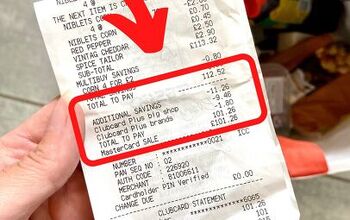How to Save Money on Food
Food is one of the biggest regular expenses in any household, but with some thoughtful planning and simple changes to your daily habits, it’s easy to significantly cut down on food costs without compromising on quality or flavor.
Whether you’re looking to save a little extra or make a big dent in your grocery bill, these practical tips will help you eat well on a budget.
Disclaimer: Simplify may receive a small affiliate commission from purchases made via links in this article but at no cost to you.
1. Eat in, not out
One of the simplest ways to save money on food is to cut back on dining out. Restaurant meals, take-out, and even coffee shop snacks often come with a hefty markup. While eating out is convenient, the cost of convenience quickly adds up.
By choosing to cook at home more often, you’ll not only save money but also have greater control over the ingredients, portions, and overall nutrition of your meals.
If cooking every night sounds daunting, don’t worry—it doesn’t mean you need to become a gourmet chef. Start small by preparing simple meals, such as pasta dishes, stir-fries, or soups.
You can even make extra portions to use for lunch the next day, cutting down on the need to spend money on midday meals. Eating at home doesn’t have to feel like a chore, especially if you take the time to learn a few easy, delicious recipes that fit your lifestyle.
2. Drink tap water
One often overlooked way to save money is by swapping expensive drinks for good old-fashioned tap water. Bottled beverages, soft drinks, and juices can significantly inflate your food costs, especially if you’re in the habit of ordering them with every meal.
By opting for tap water, you not only save money but also make a healthier choice for your body and the environment.
If you’re not a fan of the taste of tap water, consider investing in a quality water filter. A small one-time investment in a filtration system can make your home’s tap water taste better, and you’ll end up saving in the long run compared to buying bottled water. We highly recommend the Waterdrop Countertop Water Filter.
Waterdrop Countertop Water Filter
Plus, carrying a reusable water bottle with you throughout the day can help you avoid spending money on overpriced drinks when you’re out and about. The Hydro Flask Stainless Steel Standard Mouth Water Bottle will keep your drink cold for 24 hours and it comes in lots of fun colors.
Hydro Flask Stainless Steel Standard Mouth Water Bottle
3. Tips for saving money on food shopping
A trip to the grocery store can quickly become costly if you don’t plan ahead. One of the best strategies for saving money is to create a grocery list before shopping and stick to it.
Impulse purchases and “special deals” can derail your budget if you’re not careful. Always check for sales and discounts on items you regularly use, but avoid buying things just because they’re on sale if you don’t need them.
Another effective grocery store hack is to shop seasonally. Fresh fruits and vegetables are typically much cheaper when they’re in season.
Not only will you save money, but your produce will also taste better and be more nutritious. Additionally, consider buying store brands instead of name brands. In many cases, store brands offer the same quality at a lower price.
If your local store offers a loyalty or rewards program, take advantage of it. These programs often provide discounts, personalized coupons, or cashback offers based on your shopping habits, helping you save more in the long term.
4. Get serious about meal prepping
Meal prepping is one of the most effective ways to cut down on food expenses and reduce waste. By planning and preparing your meals in advance, you avoid the temptation of last-minute takeout and make more efficient use of your ingredients.
Start by selecting a few recipes that you can cook in bulk, such as casseroles, soups, or grain bowls. Prepare these meals on a designated day, and store them in individual containers in the fridge or freezer for easy access throughout the week.
Meal prepping not only saves time and money but also helps you avoid buying extra ingredients that often go unused and spoil. Plus, knowing that you have a ready-to-eat meal at home means you’re less likely to splurge on costly restaurant food or convenience snacks.
Another key advantage of meal prepping is portion control. When you prepare your meals in advance, you can portion out servings ahead of time, which helps prevent overeating and makes it easier to stretch your groceries further.
These Rubbermaid Brilliance Food Storage Containers are great for storing your pre-prepped meals.
Rubbermaid Brilliance Food Storage Containers
How to save money on food
Saving money on food doesn’t have to feel like deprivation. By making a few small changes—like eating in more often, drinking tap water, and adopting smart grocery store strategies—you can enjoy delicious, nutritious meals while keeping your wallet happy.
Combine these habits with meal prepping, and you’ll not only save time but also reduce stress around mealtime, making food both more affordable and more enjoyable.
Which hack did you find the most helpful? Comment down below.
Next, check out this post on the Best Great Depression Era Cookbooks for cheap and easy recipe ideas.

























Comments
Join the conversation